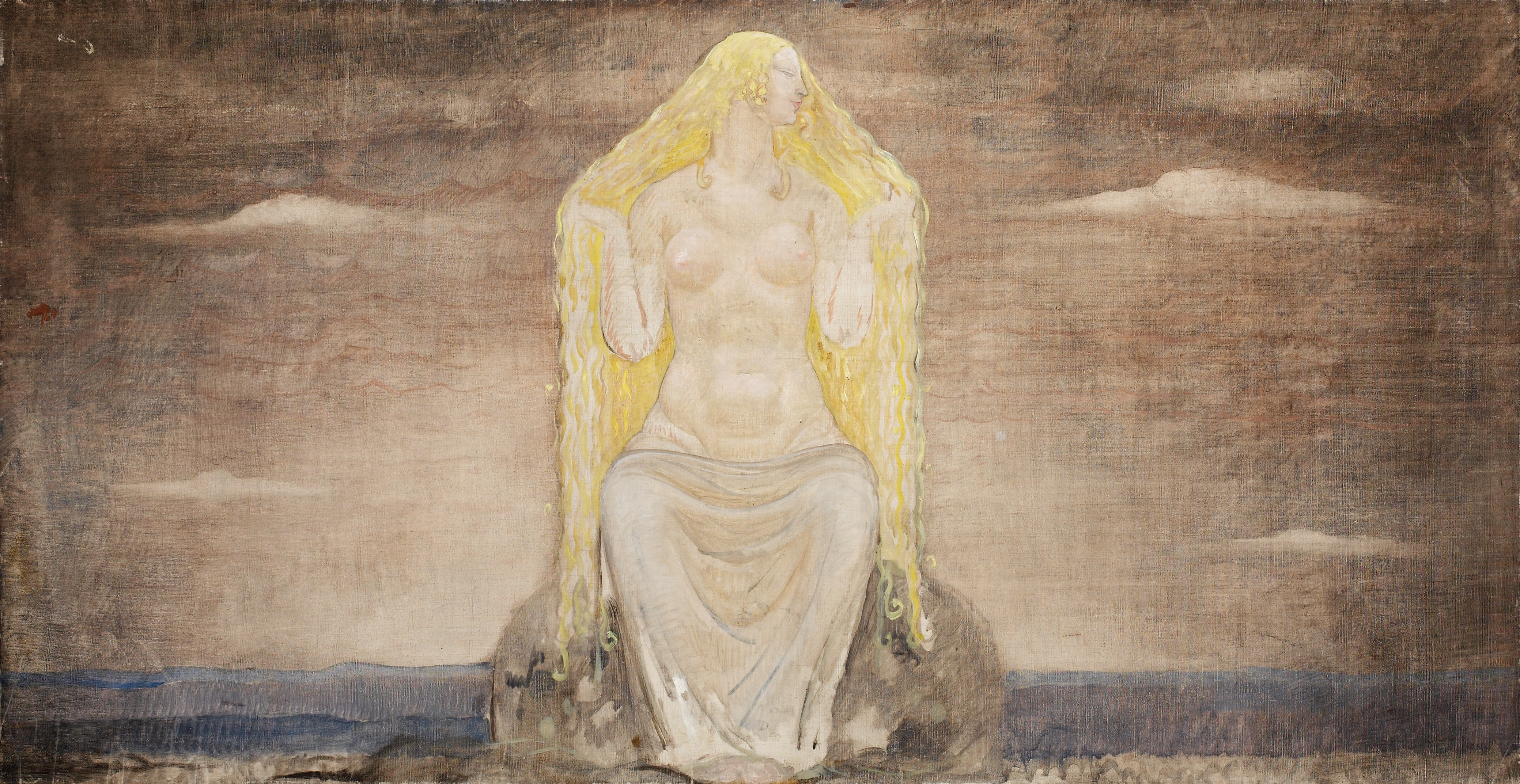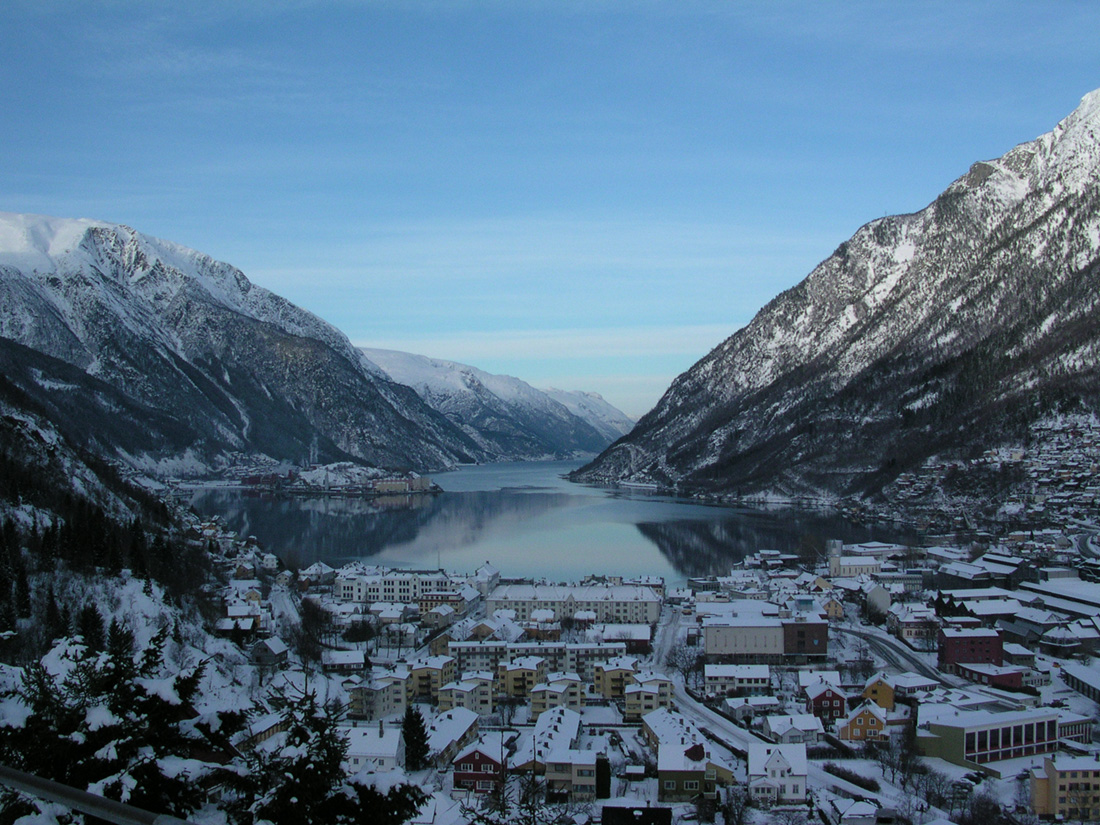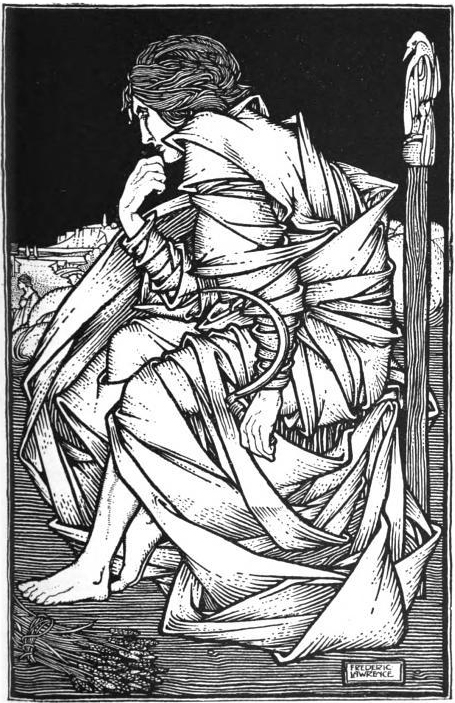|
Vanir
In Norse mythology, the Vanir (; Old Norse:, singular Vanr) are a group of gods associated with fertility, wisdom, and the ability to see the future. The Vanir are one of two groups of gods (the other being the Æsir) and are the namesake of the location Vanaheimr (Old Norse "Home of the Vanir"). After the Æsir–Vanir War, the Vanir became a subgroup of the Æsir. Subsequently, at least some members of the Vanir are at times also referred to as being Æsir. The Vanir are attested in the ''Poetic Edda'', compiled in the 13th century from earlier traditional sources; the ''Prose Edda'' and ''Heimskringla'', both written in the 13th century by Snorri Sturluson; and in the poetry of skalds. The Vanir are only attested in these Old Norse sources. All sources describe the god Njörðr, and his children Freyr and Freyja as members of the Vanir. A euhemerism, euhemerized prose account in ''Heimskringla'' adds that Sister-wife of Njörðr, Njörðr's sister—whose name is not provided� ... [...More Info...] [...Related Items...] OR: [Wikipedia] [Google] [Baidu] |
Æsir–Vanir War
In Norse mythology, the Æsir–Vanir War was a conflict between two groups of deities that ultimately resulted in the unification of the Æsir and the Vanir into a single Pantheon (religion), pantheon. The war is an important event in Norse mythology, and the implications for the potential historicity surrounding accounts of the war are a matter of scholarly debate and discourse. Fragmented information about the war appears in surviving sources, including ''Völuspá'', a poem collected in the ''Poetic Edda'' in the 13th century from earlier traditional sources; in the book ''Skáldskaparmál'' in the ''Prose Edda'', written or compiled in the 13th century by Snorri Sturluson; and in euhemerized form in the ''Ynglinga saga'' from ''Heimskringla'', also often considered to have been written by Snorri Sturluson in the 13th century. Attestations ''Poetic Edda'' In two stanzas of ''Völuspá'', the war is recounted by a völva (who refers to herself here in the third person) while ... [...More Info...] [...Related Items...] OR: [Wikipedia] [Google] [Baidu] |
Æsir
Æsir (Old Norse; singular: ) or ēse (Old English; singular: ) are deities, gods in Germanic paganism. In Old Nordic religion and Nordic mythology, mythology, the precise meaning of the term "" is debated, as it can refer either to the gods in general or specifically to one of the main families of gods, in contrast to the Vanir, with whom the Æsir Æsir–Vanir War, waged war, ultimately leading to a joining of the families. The term can further be applied to local gods that were believed to live in specific features in the landscape - such as fells. The Old English medical text Wið færstice refers to the Ēse, along with elves, as harmful beings that could cause a stabbing pain, although exactly how they were conceived of by the author of the text is unclear. and its cognate forms feature in many Germanic names, such as Oswald (given name), Oswald and , and in some place-names in Norway and Sweden. The Æsir further likely give their name to the Ansuz (rune), A-rune, atte ... [...More Info...] [...Related Items...] OR: [Wikipedia] [Google] [Baidu] |
Freyja
In Norse mythology, Freyja (Old Norse "(the) Lady") is a goddess associated with love, beauty, fertility, sex, war, gold, and seiðr (magic for seeing and influencing the future). Freyja is the owner of the necklace Brísingamen, rides a chariot pulled by two cats, is accompanied by the boar Hildisvíni, and possesses a cloak of falcon feathers. By her husband Óðr, she is the mother of two daughters, Hnoss and Gersemi. Along with her twin brother Freyr, her father Njörðr, and her mother ( Njörðr's sister, unnamed in sources), she is a member of the Vanir. Stemming from Old Norse ''Freyja'', modern forms of the name include Freya, Freyia, and Freja. Freyja rules over her heavenly field, Fólkvangr, where she receives half of those who die in battle. The other half go to the god Odin's hall, Valhalla. Within Fólkvangr lies her hall, Sessrúmnir. Freyja assists other deities by allowing them to use her feathered cloak, is invoked in matters of fertility and love, ... [...More Info...] [...Related Items...] OR: [Wikipedia] [Google] [Baidu] |
Vanaheimr
In Norse cosmology, Vanaheimr (Old Norse for 'home of the Vanir'Byock (2005:158).) is a location associated with the Vanir, a group of gods themselves associated with fertility, wisdom, and the precognition, ability to see the future. Vanaheimr is attested in the ''Poetic Edda''; compiled in the 13th century from earlier traditional sources, and the ''Prose Edda'' and (in euhemerized form) ''Heimskringla''; both written in the 13th century by Snorri Sturluson. In the ''Poetic Edda'' and the ''Prose Edda'', Vanaheimr is described as the location where the god Njörðr was raised. Attestations Vanaheimr is mentioned a single time in the ''Poetic Edda''; in a stanza of the poem ''Vafþrúðnismál''. In ''Vafþrúðnismál'', List of names of Odin, Gagnráðr (the god Odin in disguise) engages in a game of wits with the jötunn Vafþrúðnir. Gagnráðr asks Vafþrúðnir whence the Van god Njörðr came, for, though he rules over many Heathen hofs, hofs and hörgrs, Njörðr was no ... [...More Info...] [...Related Items...] OR: [Wikipedia] [Google] [Baidu] |
Njörðr
In Norse mythology, Njörðr (Old Norse: ) is a god among the Vanir. Njörðr, father of the deities Freyr and Freyja by Sister-wife of Njörðr, his unnamed sister, was in an ill-fated marriage with the goddess Skaði, lives in Nóatún (mythology), Nóatún and is associated with the sea, seafaring, wind, fishing, wealth, and crop fertility. Njörðr is attested in the ''Poetic Edda'', compiled in the 13th century from earlier traditional sources, the ''Prose Edda'', written in the 13th century by Snorri Sturluson, in euhemerized form as a beloved mythological early king of Sweden in ''Heimskringla'', also written by Snorri Sturluson in the 13th century, as one of three gods invoked in the 14th century ''Hauksbók'' Almáttki áss, ring oath, and in numerous Scandinavian toponymy, place names. Veneration of Njörðr survived into the 18th or 19th century Norway, Norwegian folk practice, where the god is recorded as Njor and thanked for a bountiful catch of fish. Njörðr has ... [...More Info...] [...Related Items...] OR: [Wikipedia] [Google] [Baidu] |
Freyr
Freyr (Old Norse: 'Lord'), sometimes anglicized as Frey, is a widely attested Æsir, god in Norse mythology, associated with kingship, fertility, peace, prosperity, fair weather, and good harvest. Freyr, sometimes referred to as Yngvi-Freyr, was especially associated with Sweden and seen as an ancestor of the Yngling, Swedish royal house. According to Adam of Bremen, Freyr was associated with peace and pleasure, and was represented with a phallus, phallic statue in the Temple at Uppsala. According to Snorri Sturluson, Freyr was "the most renowned of the æsir", and was venerated for good harvest and peace. In the mythological stories in the Icelandic books the ''Poetic Edda'' and the ''Prose Edda'', Freyr is presented as one of the Vanir, the son of the god Njörðr and Sister-wife of Njörðr, his sister-wife, as well as the twin brother of the goddess Freyja. The gods gave him Álfheimr, the realm of the Álfar, Elves, as a teething present. He rides the shining Norse dwarves, ... [...More Info...] [...Related Items...] OR: [Wikipedia] [Google] [Baidu] |
Kvasir
In Norse mythology, Kvasir (Old Norse: ) was a being born of the saliva of the Æsir and the Vanir, two groups of gods. Extremely wise, Kvasir traveled far and wide, teaching and spreading knowledge. This continued until the dwarfs Fjalar and Galar killed Kvasir and drained him of his blood. The two mixed his blood with honey, thus creating the Mead of Poetry, a mead which imbued the drinker with skaldship and wisdom, and the spread of which eventually resulted in the introduction of poetry to mankind. Kvasir is attested in the ''Prose Edda'' and '' Heimskringla'', both written by Snorri Sturluson in the 13th century, and in the poetry of skalds. According to the ''Prose Edda'', Kvasir was instrumental in the capture and binding of Loki, and an euhemerized account of the god appears in ''Heimskringla'', where he is attested as the wisest among the Vanir. Scholars have connected Kvasir to methods of beverage production and peacemaking practices among ancient peoples. Attestatio ... [...More Info...] [...Related Items...] OR: [Wikipedia] [Google] [Baidu] |
Freyr By Johannes Gehrts
Freyr (Old Norse: 'Lord'), sometimes anglicized as Frey, is a widely attested god in Norse mythology, associated with kingship, fertility, peace, prosperity, fair weather, and good harvest. Freyr, sometimes referred to as Yngvi-Freyr, was especially associated with Sweden and seen as an ancestor of the Swedish royal house. According to Adam of Bremen, Freyr was associated with peace and pleasure, and was represented with a phallic statue in the Temple at Uppsala. According to Snorri Sturluson, Freyr was "the most renowned of the æsir", and was venerated for good harvest and peace. In the mythological stories in the Icelandic books the ''Poetic Edda'' and the ''Prose Edda'', Freyr is presented as one of the Vanir, the son of the god Njörðr and his sister-wife, as well as the twin brother of the goddess Freyja. The gods gave him Álfheimr, the realm of the Elves, as a teething present. He rides the shining dwarf-made boar Gullinbursti, and possesses the ship Skíðblaðnir, wh ... [...More Info...] [...Related Items...] OR: [Wikipedia] [Google] [Baidu] |
Heimdall
In Norse mythology, Heimdall (from Old Norse Heimdallr; modern Icelandic language, Icelandic Heimdallur) is a Æsir, god. He is the son of Odin and nine mothers. Heimdall keeps watch for invaders and the onset of Ragnarök from his dwelling Himinbjörg, where the burning rainbow bridge Bifröst meets the sky. He is attested as possessing foreknowledge and keen senses, particularly eyesight and hearing. The god and his possessions are described in enigmatic manners. For example, Heimdall is golden-toothed, "the head is called his sword," and he is "the whitest of the gods." Heimdall possesses the resounding horn Gjallarhorn and the golden-maned horse Gulltoppr, along with a store of mead at his dwelling. He is the son of Nine Mothers of Heimdallr, Nine Mothers, and he is said to be the originator of social classes among humanity. Other notable stories include the recovery of Freyja's treasured possession Brísingamen while doing battle in the shape of a Pinniped, seal with Loki. T ... [...More Info...] [...Related Items...] OR: [Wikipedia] [Google] [Baidu] |
Ullr
In Norse mythology, Ullr (Old Norse: ) is a Æsir, god associated with skiing. Although literary attestations of Ullr are sparse, evidence including relatively ancient place-name evidence from Scandinavia suggests that he was a major god in earlier Germanic paganism. Proto-Germanic *''wulþuz'' ('Glory (religion), glory') appears to have been an important concept of which his name is a reflex. The word appears as ''owlþu-'' on the 3rd-century Thorsberg chape. Name and origin The Old Norse theonym ''Ullr'' derives from a Proto-Germanic (PGmc) form reconstructed as ''*Wulþuz'' ('Glory'), which is attested in the Compound (linguistics), compound ''owlþu-þewaz'' (ᛟᚹᛚᚦᚢᚦᛖᚹᚨᛉ), meaning either 'servant of ''Owlþuz''' (if interpreted as a theonym), or 'who has glorious servants' (if interpreted as an adjective), found on the Thorsberg chape (3rd c. AD). It is a cognate (linguistic sibling from the same origin) of the Gothic language, Gothic noun ''wulþus'' (' ... [...More Info...] [...Related Items...] OR: [Wikipedia] [Google] [Baidu] |
Norse Mythology
Norse, Nordic, or Scandinavian mythology, is the body of myths belonging to the North Germanic peoples, stemming from Old Norse religion and continuing after the Christianization of Scandinavia as the Nordic folklore of the modern period. The North Germanic languages, northernmost extension of Germanic mythology and stemming from Proto-Germanic folklore, Norse mythology consists of tales of various deities, beings, and heroes derived from numerous sources from both before and after the pagan period, including medieval manuscripts, archaeological representations, and folk tradition. The source texts mention numerous gods such as the thunder-god Thor, the Huginn and Muninn, raven-flanked god Odin, the goddess Freyja, and List of Germanic deities, numerous other deities. Most of the surviving mythology centers on the plights of the gods and their interaction with several other beings, such as humanity and the jötnar, beings who may be friends, lovers, foes, or family members of ... [...More Info...] [...Related Items...] OR: [Wikipedia] [Google] [Baidu] |
Proto-Indo-European Religion
Proto-Indo-European mythology is the body of myths and deities associated with the Proto-Indo-Europeans, speakers of the hypothesized Proto-Indo-European language. Although the mythological motifs are not directly attested – since Proto-Indo-European speakers lived in preliterate societies – scholars of comparative mythology have reconstructed details from inherited similarities in mythological concepts found in Indo-European languages, based on the assumption that parts of the Proto-Indo-Europeans' original belief systems survived in the daughter traditions. The Proto-Indo-European pantheon includes a number of securely reconstructed deities, since they are both cognates—linguistic siblings from a common origin—and associated with similar attributes and body of myths: such as , the daylight-sky god; his consort , the earth mother; his daughter , the dawn goddess; his sons the Divine Twins; and and , a solar deity and moon deity, respectively. Some deities, ... [...More Info...] [...Related Items...] OR: [Wikipedia] [Google] [Baidu] |








